Ancient lathe machine discovered in Hampi India - machining of megalithic sites confirmed
Hey guys, this is the ancient site of Hampi that has been abandoned for at least 500 years, and here we can see this rock that shows solid evidence of machining technology. These perfect circular marks on this rock can be produced only with machines.
This process is called facing, and we use the same technology today using lathe machines. It is covered with dirt when I found it, so I cleaned it up. Now, If you look at these circles, they are perfectly concentric and there is no deviation, no chipping in the rock, very similar to modern day technology.
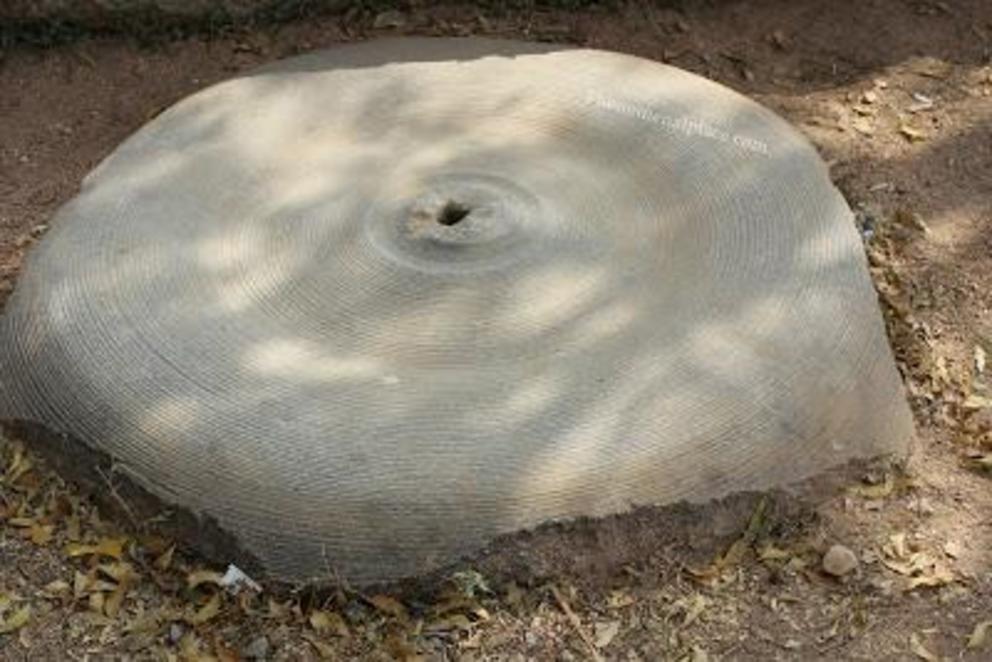
The rectangular slot in the center proves that this rock was machined using lathe technology. So, how was this created at least 500 years ago, at a time when historians claim there was no such technology? Were ancient builders using high tech machines many centuries ago, just like today? If this is true, we should not only find finished products like this circular rock, but we should also find the entire mechanism that was able to create this finished product. Is it possible that the entire mechanism, the lathe itself can be found in the same area?

Now, if we take a step back and look at the entire picture, it has some very interesting components. It has two posts with circular holes near the top, which obviously means that a cylindrical rod was inserted between them, like this.
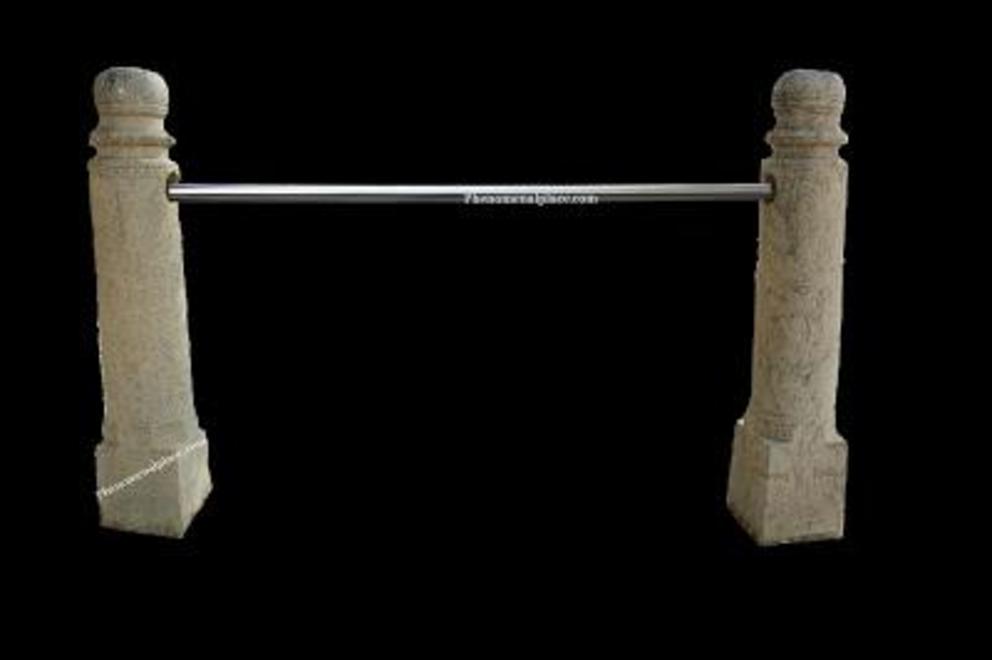
This is a simple model that I am recreating, which I will show side by side, so you can understand this better. Nearby, we can see a long rectangular slab, with a hole in the center. When I measured the length of the slab, it matches exactly with the distance between the two posts. What does this mean? This means that the slab would fit perfectly between these posts. I am using this green rectangular styrofoam block which represents the slab in my model. So, the set up would look like this.
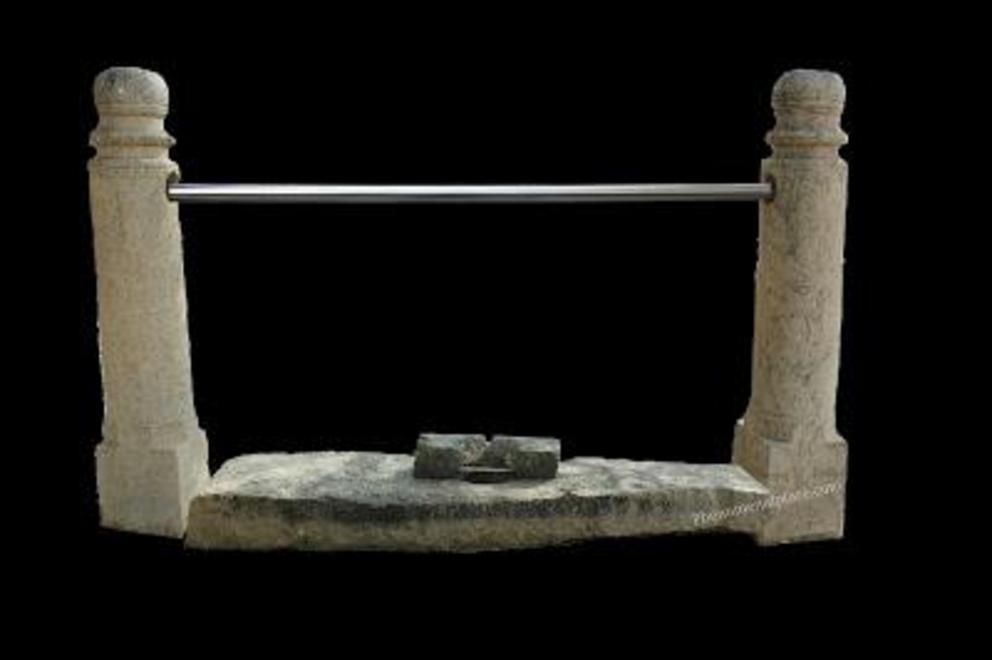
If a metal tool was placed on this cylinder, pointing downwards, it looks like a modern day vertical lathe machine. I am going to use a pen for the metal tool in my model. This rectangular slab would be the base plate on which circular rocks could be placed and machined.
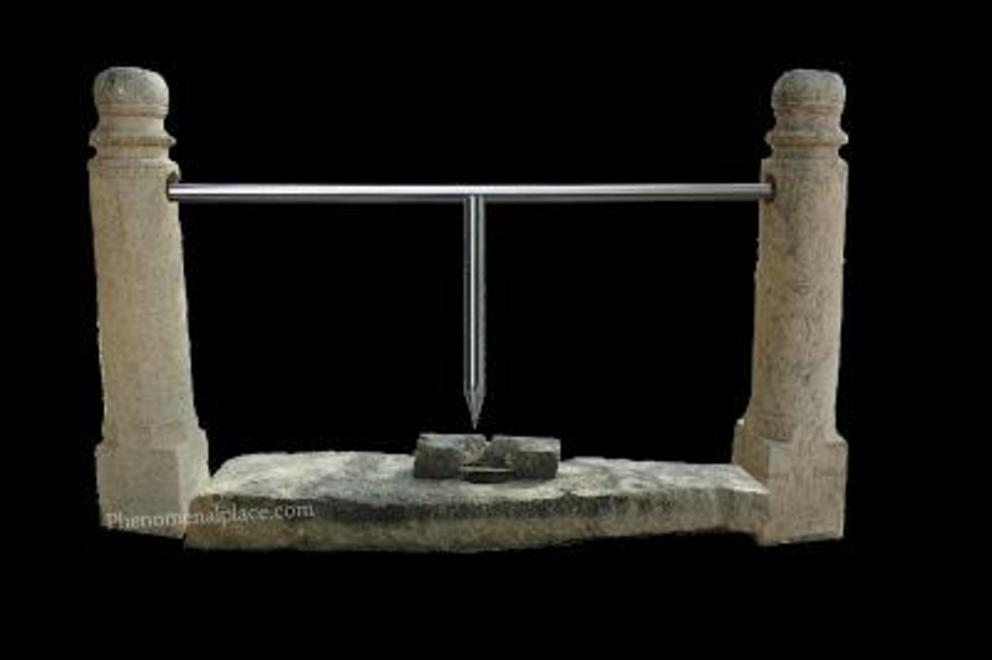
Here is a simple round object which represents the circular rock and I place it on the rectangular slab, and if I rotate the circular rock, and lower the tool from the top, we can create these identical tool marks.
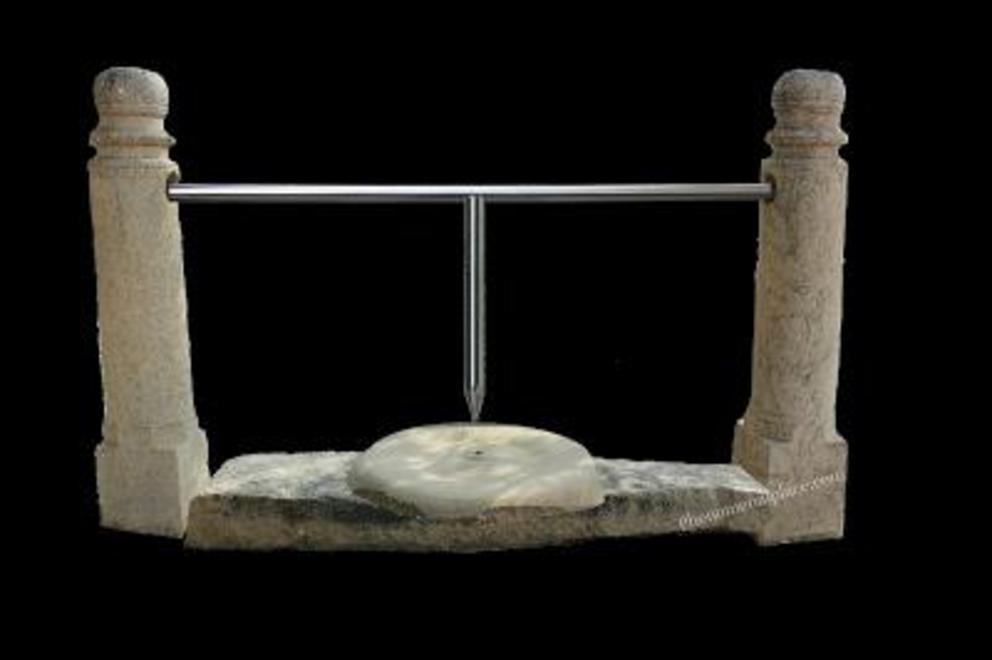
See the similarity of the circles between this model, and the actual rock. My model has not rotated on a perfect axis, so you see that the circles are not as good, but the work of ancient builders was perfect. This set up actually proves that ancient people used vertical lathe technology, at least 500 years ago. See the video to understand this.
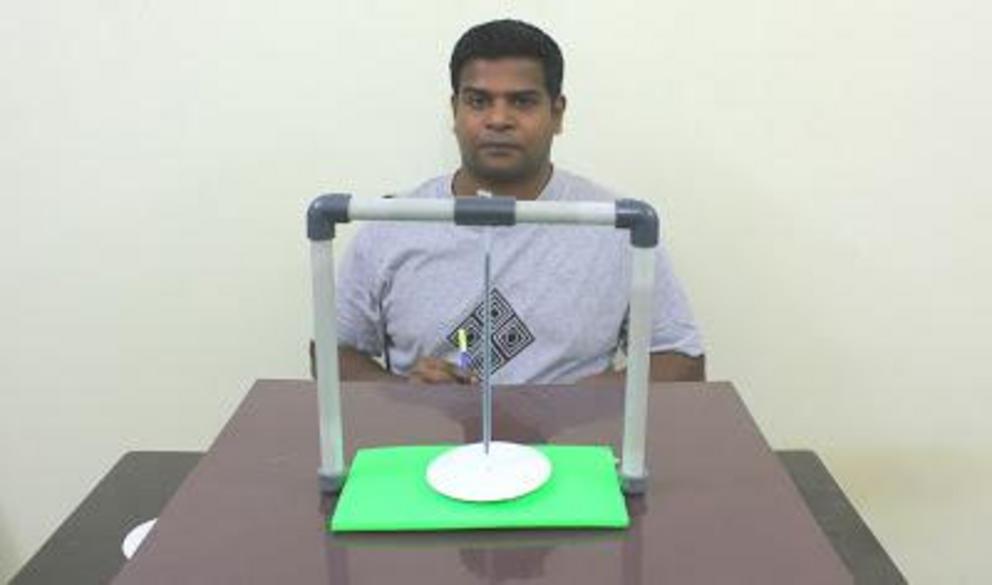
What's even more interesting is that you can see some circular wear and tear on the base plate as well. Look at the base plate, you can see these half circular marks caused by the rotating objects which were placed on top of it. The other half shows no such tool marks, because these marks were created by accident, by friction from the rotating objects placed above. You can see the same marks beginning to form on my model as well.

All these evidences clearly prove that machining technology, specifically vertical lathe technology was used in India, at least 500 years ago, and some archeologists even say this site was built 2300 years ago. So, I think I have just discovered the oldest machining set up, known to mankind, and it is lying in plain sight, abandoned and covered in dirt.
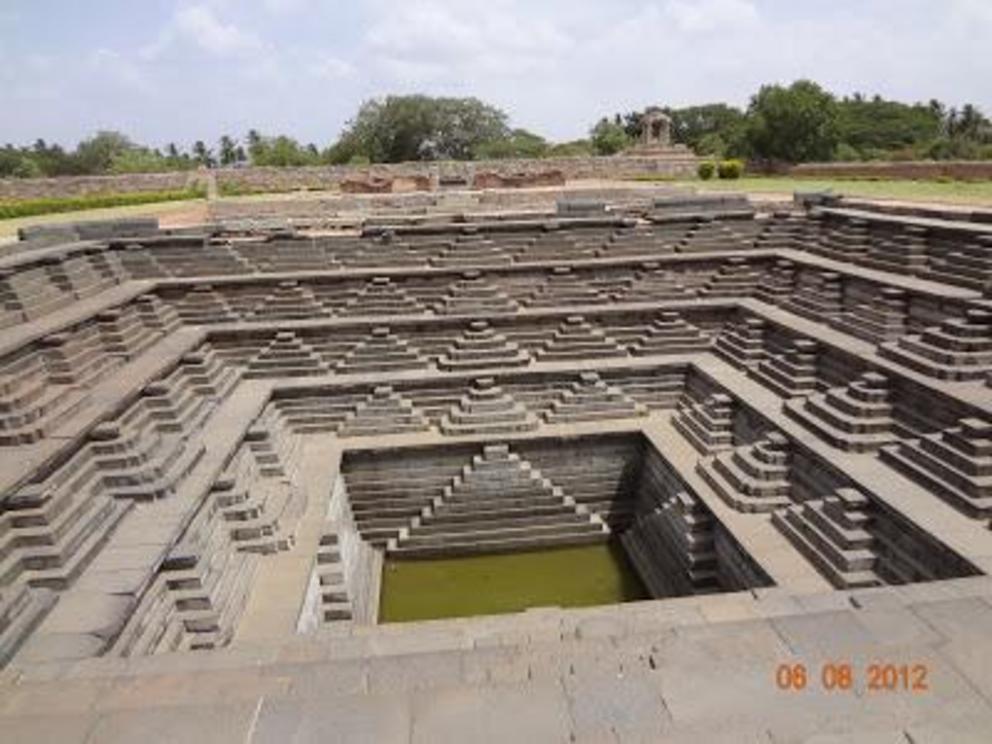
So, why did ancient builders need this type of advanced technology? What did they create using this technology? Is it possible to find the products of this machining in the same site? Here is the majestic well nearby, created with pyramid shaped steps all around, with machining perfection. Archeologists say these were created with hard labor, chisels and hammers. But is such a precision possible with simple tools? Is it possible, that these were made with machining technology? Were many of the inexplicable megalithic structures in India, made with machines? Remember, I showed you the machine made pillars at Hoysaleswara temple in a previous post.
But In this abandoned site of Hampi, we can find a lot more strange stone artifacts than any other temple. Here we can see two massive doors created out of solid granite. Again, they look like they have been created with machines.

But there is something much more interesting, these doors were not created for mere decoration, these stone doors weighing 10 tons each, were used as actual doors in ancient times. There are hinges for swinging the door, and even slots for locks. Did ancient builders use rocks for everything, just like how we use metals and wood today? Today most of the things we use like doors and furniture are made with machines. Modern buildings are also created with machines, with very little manual labor. Did ancient people build temples and other structures the same way, but used rocks for everything?
So, what do you think? Did ancient builders use machines many centuries ago, just like today? If they did not use machines, how do you explain these circular tool marks, lathe setup and megalithic structures finished with such precision? Please share this post with your friends, because I think we have just found the world's oldest lathe technology.
